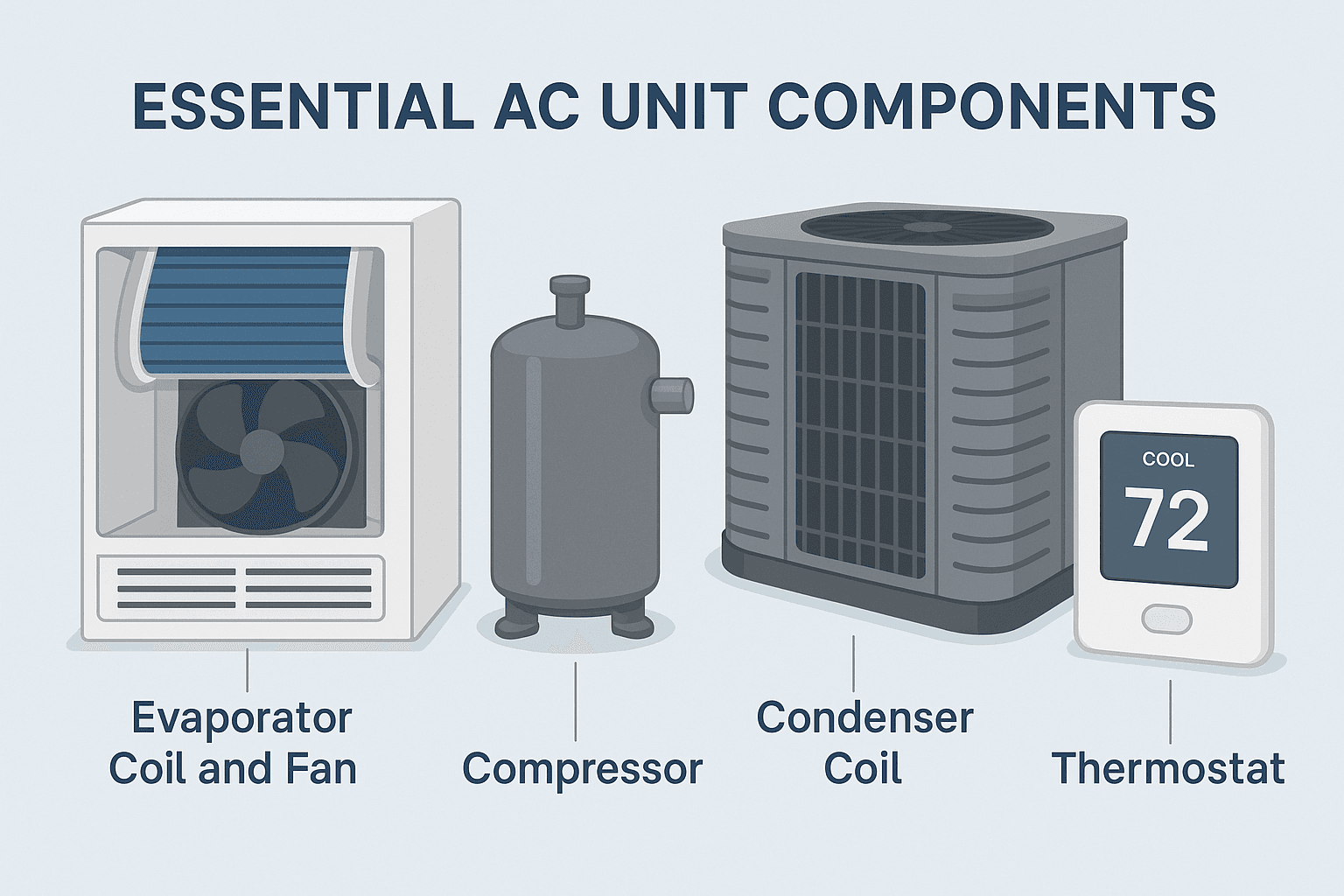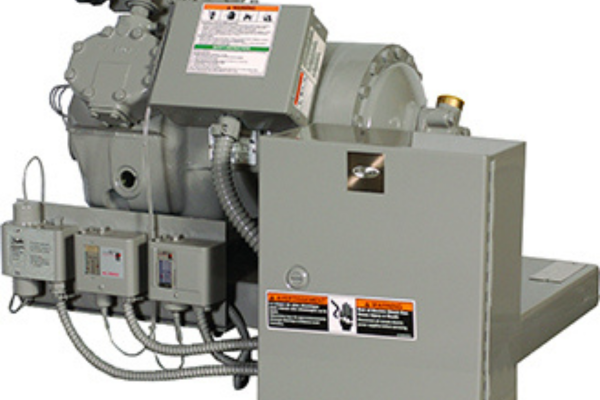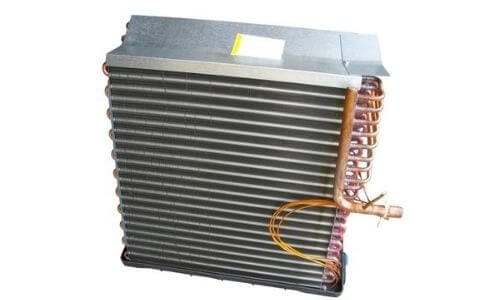When the heat of summer hits, we all rely on our air conditioning units to provide a cool refuge. But have you ever wondered about the inner workings of your AC unit?
Understanding Essential AC Unit Components can empower you to make informed decisions about its maintenance and repair. It can also help you communicate more effectively with HVAC professionals when you need their services.
In this guide, we’ll break down the key parts of an AC unit, from the compressor to the condenser coil, and everything in between. We’ll explain their functions and why they’re crucial to your comfort.

Whether you’re a small business owner, a work-from-home professional, or a busy stay-at-home mom, this knowledge can help you ensure your AC unit is running efficiently. It can also help you address any issues quickly, minimizing disruption to your day.
So, let’s dive in and demystify the world of AC unit parts together.
The Anatomy of an AC Unit: Breaking Down the Basics
An air conditioning unit might seem complex at first glance, but breaking it down into its fundamental parts makes it much more approachable. At the heart of the system lies the compressor, acting as a crucial player by driving refrigerant through the unit. The compressor ensures the cycle of heat exchange continues without interruption.
The outdoor unit, also known as the condenser, is home to vital elements like the condenser coil and fan. This part of the system helps in the dissipation of heat, keeping your environment cool and comfortable. Understanding this role can explain why this component is often situated outdoors.
Inside your home, the indoor unit houses the evaporator coil and air handler. These components work together to absorb heat from inside the space, making the air feel fresher and cooler. Their synchronized operation ensures your home remains a perfect refuge from the outside heat.
Key Parts of an AC Unit:
- Compressor
- Condenser coil
- Evaporator coil
- Expansion valve
- Air handler and blower fan
- Thermostat
- Refrigerant
- Air filter
- Drain line
Each of these components plays a unique and essential role in the cooling process.
Understanding the basics of these parts not only makes troubleshooting easier but also ensures that you can maintain optimal home comfort.
Compressor: The Heart of the AC System
The compressor is often referred to as the heart of an air conditioning unit. Its primary job is to pump refrigerant through the system. This vital component converts low-pressure gas to high-pressure gas, enabling the refrigeration cycle to occur seamlessly.
This process begins when the compressor takes in gaseous refrigerant from the indoor unit. By compressing this gas, the system raises its temperature and pressure. This transformation is essential for the next step of heat release in the condenser coil.
If your AC is struggling to cool your space, the compressor could be at fault. Regular maintenance can help keep it in top shape. A healthy compressor ensures that the refrigerant flows properly, maintaining the desired indoor temperature efficiently.
The complexity of the compressor often means repairs should be left to the professionals. Attempting to fix it yourself can lead to more significant issues if not handled correctly. Trust a professional to handle these concerns safely.

Condenser Coil: Releasing the Heat
The condenser coil is a crucial component that helps release heat absorbed inside your home. It plays a significant role in the cooling process, working closely with the compressor. The high-pressure refrigerant gas enters the condenser coil and releases heat outside as it condenses into a liquid.
One vital aspect of the condenser coil is its exposure to the outdoor environment. This location allows the heat absorbed from indoors to be efficiently expelled into the surrounding air. The coil’s fins increase surface area, enhancing the heat transfer process.
Given the outdoor location, the condenser coil is susceptible to dirt and debris buildup. Regular cleaning ensures optimal performance and efficiency. A clogged coil can lead to energy wastage and increased cooling costs, so keeping it clean is essential.
Checking the condenser coil’s condition is a good practice, particularly before summer hits. Some maintenance tasks may be manageable on your own, but professional services can ensure thorough cleaning and inspections. Ensuring a clear, unobstructed airflow around the coil can prevent overheating and extend the unit’s lifespan.
Evaporator Coil: Where the Cooling Happens
The evaporator coil is the main star in the cooling process. Located inside the indoor unit, it absorbs heat from the air in your home. As warm air from your home is passed over the coil, the refrigerant inside absorbs the heat and cools the air.
This cooled air is then circulated back into your living spaces, creating a comfortable environment. Without the evaporator coil, your home wouldn’t experience the cooling effects of your AC system. It works silently and efficiently to remove heat, making it an unsung hero of home comfort.
The efficiency of the evaporator coil is paramount. Dirty or frozen coils can impair performance, causing your AC unit to struggle and leading to higher energy bills. Regular maintenance is crucial to ensure that the coil is clean and free from ice buildup.
Keeping your evaporator coil in peak condition not only improves cooling but also extends the life of your AC unit. Routine checks and professional cleanings are recommended. When your AC unit is struggling, the evaporator coil is often the first place to look.

Expansion Valve: Regulating Refrigerant Flow
The expansion valve plays a vital role in your AC unit. It controls the flow of refrigerant into the evaporator coil. By reducing pressure, the valve allows the refrigerant to expand and cool before it absorbs heat from your indoor air.
This component ensures the refrigerant enters the evaporator coil at the right temperature and pressure. An efficient expansion valve helps maximize cooling efficiency and prevents coil freezing. If it’s malfunctioning, your system might not cool effectively, leading to discomfort and inefficient energy use.
Regular inspection of the expansion valve is necessary for optimal system performance. Problems with this part can often be diagnosed by a professional, ensuring that your AC unit operates smoothly and efficiently. Addressing expansion valve issues promptly can save you from larger repairs down the road.
Air Handler and Blower Fan: Circulating Comfort
The air handler and blower fan work together to distribute cooled air throughout your space. Situated inside the home, they ensure that air moves efficiently over the evaporator coil. This process is critical for maintaining a comfortable indoor climate.
An effective air handler enhances the efficiency of the overall system, preventing hot and cold spots. The blower fan, powered by an electric motor, moves air across the coils and through the ductwork. Without this circulation, even the coolest air won’t reach you when needed.
Should your blower fan make unusual noises or if airflow is weak, it might need attention. Simple issues can sometimes be resolved with a clean filter, but other times the fan itself may need service or replacement by a professional. Ensuring the air handler and blower are functioning well can extend the life of your AC unit.
Regular maintenance not only keeps these components in top shape but also supports your unit’s overall energy efficiency. Keeping the air handler and blower fan free of dust and debris is a simple step with a big impact.
Thermostat: The Command Center
The thermostat is the brain of your AC system, governing when to cool your space. It measures indoor temperatures and signals the AC unit to power on or off. This process ensures that your home stays at the desired temperature efficiently.
Smart thermostats offer an upgrade with features like remote access and learning capabilities. They adjust settings based on your habits, saving you energy and money. This is especially beneficial for those balancing work-from-home demands with comfort needs.
If your thermostat malfunctions, your unit may not maintain the correct temperature. Indicators of issues include constant running or an unresponsive system. Simple troubleshooting includes checking the settings or replacing batteries. For complex problems, professional help may be necessary.

Refrigerant: The Lifeblood of Cooling
Refrigerant plays a pivotal role in your AC unit’s operation. It absorbs and releases heat, facilitating the cooling process. This cycle is continuous, ensuring your space remains comfortable.
The efficiency of your AC unit depends significantly on the right refrigerant charge. Both too much and too little can harm performance. Monitoring refrigerant levels is a task best left to professionals, given its complexity.
Recent environmental regulations have spurred changes in refrigerant types. Many older AC units use refrigerants that are being phased out. It’s wise to consult an expert to ensure your system uses an eco-friendly option.
Air Filter: Ensuring Clean Air Quality
An air filter is crucial for maintaining indoor air quality. It traps dust, pollen, and other airborne particles. This ensures you breathe cleaner air, reducing the risk of allergies.
Besides health benefits, a clean filter enhances AC efficiency. It allows for better airflow, which means your unit doesn’t have to work as hard. Keeping the filter clean can lower energy costs and prolong the life of your system.
Regular filter maintenance is simple. Check it monthly and replace it as needed. In high pollen areas or if you have pets, more frequent checks may be necessary.
Drain Line: Managing Condensation
The drain line in your AC unit plays a critical role in managing moisture. It carries away condensation formed during the cooling process. This prevents water damage and maintains optimal humidity levels within your home.
A clogged drain line can lead to problems like water leakage and mold growth. Regularly inspecting and cleaning the line can help avoid these issues. Using a solution of vinegar or a commercial cleaner can keep the line clear.
If you notice water pooling around your AC unit, it could be a sign of a blocked drain line. In such cases, it’s best to contact a professional to clear the blockage safely. Maintaining a clear drain line ensures your system runs efficiently and your indoor environment stays comfortable.
Capacitor and Contactor: Starting and Running the Unit
Capacitors are vital components of an AC unit, responsible for providing the initial jolt of electricity needed to start the compressor and fan motors. This electrical boost is essential, especially when your unit kicks into action on hot days. Without capacitors, your unit might struggle to start, leading to increased wear on the system.
A faulty capacitor can lead to sluggish performance or frequent unit shutdowns. It’s important to recognize signs of capacitor failure, like humming noises or a system that won’t start. Replacing a worn-out capacitor is a job for a trained technician who can ensure the correct fit and voltage.
The contactor acts as an electrical switch in your AC unit. It manages the flow of electricity to key components, allowing the unit to operate smoothly. When the thermostat signals a need for cooling, the contactor engages, powering the compressor and fan.
A malfunctioning contactor can prevent your unit from turning on. Regular inspections can ensure the contactor is in good working order. Catching these issues early can save you from unexpected breakdowns and costly repairs.
Ductwork and Insulation: Delivering and Preserving Cool Air
Ductwork is the network of tubes that transports cooled air throughout your home or business. Its design and condition have a huge impact on system performance. Leaky or poorly insulated ducts can lead to air loss, which decreases efficiency and increases energy bills.
It’s essential to have your ductwork inspected regularly. A professional can check for leaks or blockages that might be hindering airflow. Any issues found should be resolved promptly to restore optimal function and comfort.
Insulation plays a crucial role in maintaining the desired indoor temperature. Proper insulation around ductwork and air conditioning units helps prevent energy loss. This keeps the cooled air as cool as possible as it travels through the system.
There are various types of insulation available, and each has its own benefits. Choosing the right type of insulation is important for maximizing energy efficiency. A knowledgeable HVAC professional can guide you in selecting suitable options for your specific needs.
When to Call the Pros: Maintenance and Repairs
As a homeowner, it’s important to know when to call a professional for AC unit maintenance or repairs. While some tasks, like changing air filters, can be done on your own, others require the expertise of a trained HVAC technician.
Strange noises are often a clear signal that your AC unit needs attention. Grinding, screeching, or rattling sounds can indicate issues that need quick assessment by a professional. Ignoring these noises can lead to more serious damage over time.
Another sign to watch for is weak airflow or warm air coming from your vents. These issues can be caused by several factors, such as a faulty blower fan or evaporator coil. A professional will be able to diagnose the problem and recommend the best solution.
Routine maintenance by a professional is essential for the longevity and efficiency of your AC unit. Spring or early summer is an ideal time to schedule a tune-up before the heat hits. This can help prevent unexpected breakdowns and high repair bills during peak cooling season.
Here’s a quick list of when to call a professional:
- Unusual noises or vibrations
- Weak or no airflow
- Unexplained increases in energy bills
- Frequent cycling on and off
- Inconsistent temperatures throughout your space
Investing in regular professional maintenance can save you time, money, and stress in the long run, ensuring your system stays in top shape.
Finding the Right Parts: A Guide to Compatibility and Purchasing
When your AC unit needs repairs, finding the right replacement parts is crucial. Whether you own a LG, Goodman, or another brand, compatibility matters. Using the incorrect part can affect efficiency or cause further damage.
Start by identifying the make and model of your unit. This information is typically found on a label attached to the outdoor unit. Knowing this ensures you purchase compatible parts, saving time and money.
Next, consider where to buy your AC unit parts. Local HVAC supply stores often carry a wide range of parts for various brands like Rheem and Amana. These stores can provide expert advice to help with your purchase. Online retailers are also a popular choice for their convenience and often competitive pricing.
Keep in mind the importance of quality when selecting replacement parts. Opt for parts that match or exceed the manufacturer’s specifications. This minimizes the risk of inefficiency or unexpected failures. Investing in high-quality parts pays off in the long run.
Here’s a brief checklist to guide your purchase:
- Confirm the unit’s make and model
- Choose trusted suppliers or retailers
- Compare prices and reviews
- Ensure parts meet or exceed original specs
By considering these steps, you ensure your AC unit continues to operate smoothly and efficiently.
Conclusion: The Importance of Understanding Essential AC Unit Components
Understanding the parts of your AC unit empowers you as a homeowner. This knowledge helps in making informed decisions about maintenance and repairs. It guides you in recognizing issues early and knowing when to seek professional help.
An educated approach ensures your AC unit operates at peak efficiency, providing comfort and cost savings. Remember, well-maintained units last longer and perform better. Investing time to learn about your AC system’s components and functions pays dividends in longevity and peace of mind. Your home remains a sanctuary of comfort, regardless of the season.
FAQs About AC Unit Parts
Navigating the world of AC unit parts can be overwhelming. To assist, here are answers to some frequent questions. These insights can help in understanding and maintaining your cooling system.
Common Questions:
- What is the most important part of an AC unit?
- Can I replace AC unit parts myself?
- Where can I find replacement parts for my AC unit?
- How often should I replace the air filter?
- What signs indicate a failing compressor?
Understanding these FAQs provides clarity and confidence when maintaining or repairing your AC unit. Remember, while some tasks might seem straightforward, it’s often best to consult a professional. This ensures safe and effective handling of complex components.


